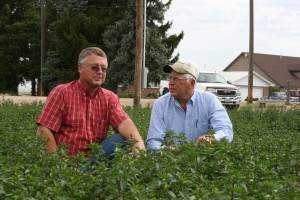NRCS Chief Tours California Farms & New Drip Irrigation System
USDA Natural Resources Conservation Service (NRCS) Chief Jason Weller toured local farmland in Los Banos, California that is benefiting from a federal partnership between NRCS and the U.S. Department of Interior Bureau of Reclamation (Reclamation) to protect the Bay-Delta Watershed. Approximately $6 million was invested by the two agencies, from 2011 – 2013, to upgrade irrigation water delivery infrastructure and on-farm irrigation equipment to conserve water for San Luis Canal Company farmers.
“Water is the lifeblood of agriculture and the environment,” said Cannon Michael, a local farmer. “Farmers have a duty to be good stewards of our resources and conservation is a key element of good stewardship. Improved water use efficiency and reduced runoff benefits farmers and the environment. Our partnership with NRCS has yielded very positive results and their programs encourage conservation on a large scale.”
Weller toured Michael’s new drip irrigation system, funded by NRCS, and nearby infrastructure improvements funded by Reclamation.
NRCS Chief Tours California Farms & New Drip Irrigation System Read More »


